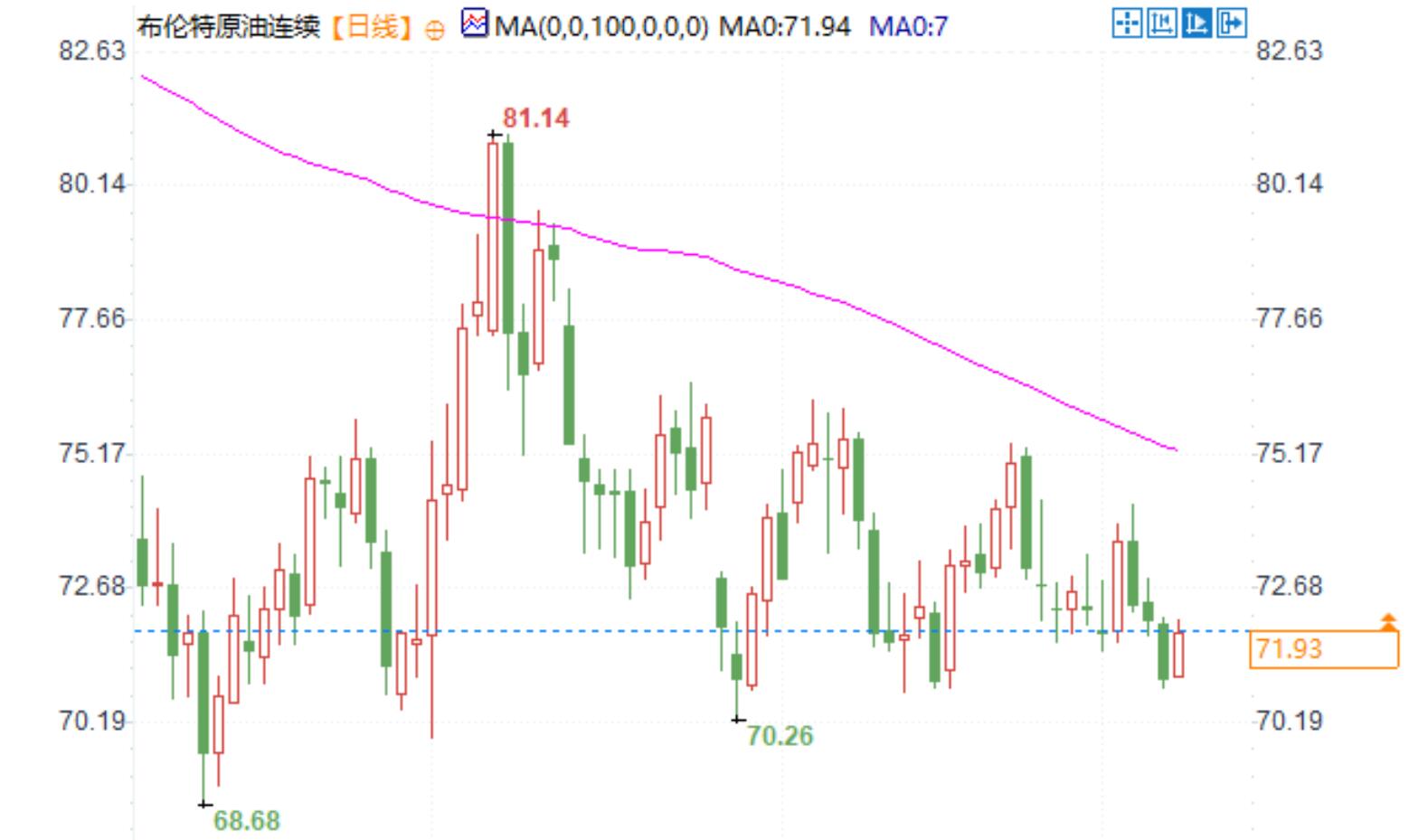Syrian regime change! The situation in the Middle East is stirring up waves again, can the crude oil market regain its glory?
On Monday (December 9th), the Brent crude oil continuous contract was now reported at $72.02 per barrel, up 1.40% for the day; The WTI crude oil contract traded continuously at $68.18 per barrel, with a daily increase of 1.46%. Both have ended two consecutive weeks of decline, showing a slight upward trend. The main driving factor for the rise in oil prices is the new round of uncertainty in the Middle East geopolitical situation, while market concerns about future weak demand continue to exert pressure, suppressing the increase.
The escalating situation in the Middle East has led to market volatility
The news of the overthrow of Syrian President Bashar al Assad has once again heightened market concerns about the situation in the Middle East. The Syrian domestic rebel forces have declared control of the situation, ending the 50 year rule of the Assad family. This' blitzkrieg 'style regime change has made the already turbulent situation in the Middle East even more complex. The market is concerned that this event may trigger a regional chain reaction, especially in the context of a fragile crude oil supply chain, where the supply risks brought by political turmoil support short-term oil prices.
Analysis suggests that this change has added new uncertainty to the market, providing support for Brent crude oil and WTI crude oil in a sluggish demand environment. However, the sustainability of this geopolitical risk premium depends on whether the future situation further escalates or spreads. At present, although the actual risks of supply chain disruptions are not yet clear, changes in market sentiment have had a significant impact on oil prices.
The market demand outlook is still not optimistic
Despite the geopolitical situation driving up oil prices, the weak performance on the demand side still limits the potential for further increases. Saudi Arabia has lowered its crude oil prices for Asian customers, adjusting the official sales price for January 2025 to a four-year low. As the world's largest crude oil exporter, Saudi Arabia's move reflects concerns about the continued sluggish global demand.
OPEC+decided last week to postpone the production increase plan until April 2025 and extend the existing production reduction agreement until the end of 2026. This decision is clearly in response to the pressure of slowing global demand growth.
At the same time, the number of crude oil and natural gas drilling platforms in the United States has reached a nearly three-month high, indicating that production may continue to increase. As the United States becomes one of the major suppliers in the global crude oil market, this production growth may further exacerbate the supply-demand imbalance in the future. In addition, the latest position report from US fund management agencies shows that funds are gradually re entering the market, but it remains to be seen whether more capital inflows will change the price trend.
Outlook for the future: risks and opportunities coexist
Overall, the geopolitical uncertainty in the Middle East may continue to support oil prices in the short term, but market concerns about weak demand and oversupply remain long-term pressures. Especially Saudi Arabia's price reduction actions and sluggish demand indicate that the future crude oil market may face a structurally weak supply-demand situation.
From the trend of the market, if Brent crude oil can maintain the $72 mark, it may further test the resistance range of $73-74 above; WTI crude oil is concerned about whether the short-term support of $68.5 can continue to be effective. However, with the intensive release of global economic data, especially the inflation data from the United States and the results of the China Economic Policy Conference, market sentiment may rapidly shift, and it is necessary to closely monitor the potential impact of these events on oil prices.


In the current environment, investors need to be cautious in facing short-term fluctuations driven by geopolitical situations, while closely monitoring the possibility of demand side recovery and the profound impact of supply side changes on the medium to long term market.
Tips:This page came from Internet, which is not standing for FXCUE opinions of this website.
Statement:Contact us if the content violates the law or your rights
